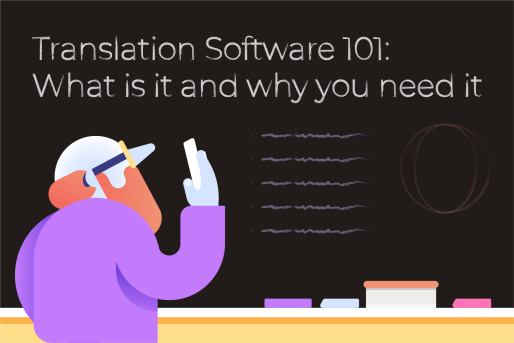Around the world, no matter what language we speak, we are able to enjoy the same content all thanks to the amazing talent of professional translators. Yet, like myself, many of us probably don't consider the tremendous effort required to deliver an amazing experience in an entirely new language.
Translation software has made it possible for brands to deliver their content to a global audience at a rapid pace while reducing the overall cost and even manual effort that a localization project previously required.
Traditionally, translations would happen in a spreadsheet or text document, completely separated from any other related content or visual context.
What was once previously a constant juggling act of managing emails and spreadsheets has now become an automated and agile process.
What Is Translation Software?
Translation software includes tools, features, and resources used to simplify the entire translation process to quickly deliver high-quality translations. The best translation software holistically centralizes project management, content delivery, data analysis and reporting, and of course, translation itself.
Brands can leverage translation and localization software to empower translators by replacing the manual process of translating blindly through a spreadsheet with a highly automated and transparent process.
Core Translation Software Features
The core functionality of translation and localization software is built on a foundation of data analytics, artificial intelligence, automation functionality, and easily accessible resources to aid translators.
1. Project Management
Translation software makes it easy to stay organized and ensure all of your content is accounted for.
With all of your projects centralized in one platform, brands can leverage translation software for a unified strategy across all of their content, across every channel.
Linguistic assets, for example, can be leveraged to ensure consistency throughout translations, manage users, create customized workflows and analyze every step of the process.
2. Translation Interface
Computer Aided Translation tools assist translators by simplifying the process with the necessary tools and functions for consistent translation.
Translation software CAT tools offer several features: for example, brand assets, automated quality checks, version control, integrated quality, string management, and visual context.
3. Content Connectors
Translation software can connect directly to your content for a simplified translation process in two main ways:
- API connectors enable translation software to integrate with existing content platforms, allowing users to easily submit and retrieve professional translations with a click of a button.
- Translation proxies enable rapid deployment of content with minimal developer investment required. Sitting on top of your brand's existing website, a translation proxy works by delivering a translated version of your website to users specifically when a request is made.
4.Linguistic Assets
With translation software, brands can easily provide a variety of linguistic assets to be made available for translators.
Translation memory enables translators to save time and cut down on costs, by letting them reuse translations.
Meanwhile, glossaries and style guides act as brand assets to ensure translators remain consistent and on-brand.
5. Automation
Powerful automation functions enable rapid and agile translation, without sacrificing quality or consistency.
Keep content flowing with automatic content routing, assigning projects to translators when they have completed a job, or new content has been added.
With dynamic workflows, users can automatically route content to different paths based on set conditions. Quality check notifications provide translators with a reminder to clean up any errors before submitting their work.
The Benefits of Translation Software
Translation and localization software was designed to aid translators in their work while providing transparency and control throughout the entire process.
- Measure the entire process
Data analytics and reporting enable businesses to track every step of the process and attribute value to each action taken. Understand exactly how much translations cost
- Push content to market faster
Automation enables content to flow freely through the translation process, removing manual work and reducing clicks. With a simplified content workflow, translators can focus on the important task at hand: translating.
- Save time and money
With only a one word translation minimum Smartling's translation software enables your business to take total control of the process, and costs surrounding translation. With Translation Memory, your business will only pay to translate the same words and phrases once.
- Produce higher quality translations
Linguistic assets enable translators to not only help reduce costs but ultimately improve the final quality of translations, as well. Style guides and glossaries enable translators to stay on brand, and translation memory leverage ensures consistency throughout the translation.
Brands can leverage these pillars of functionality to manage and translate content on a global scale, with less time, energy and money spent on localizing content.
Translation Software lets you translate faster
It's all about finding the right tool for the job. Translation and localization software empowers brands with unparalleled visibility into the entire translation process, and translators with the crucial assets they need to deliver high-quality translations.
When it comes to expanding your brand globally, Smartling enables you to automate, manage, and professionally translate content so that you can do more with less. Reach out to one of our experts if you want to see how Smartling can help transform your brand.
About Matt
Matt Grech is the Content Marketing Manager at Smartling, responsible for growing Smartling awareness and brand content. As a digital content writer, Matt applies his journalistic lens to content, helping users deepen their understanding of the brand, services and technology provided by Smartling. Matt has previously contributed to an industry leading Unified Communications resource, as well as local newspapers where he developed his unique ability to investigate, interview, and transform complex problems into simple solutions.








